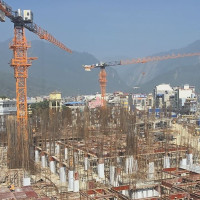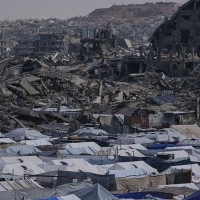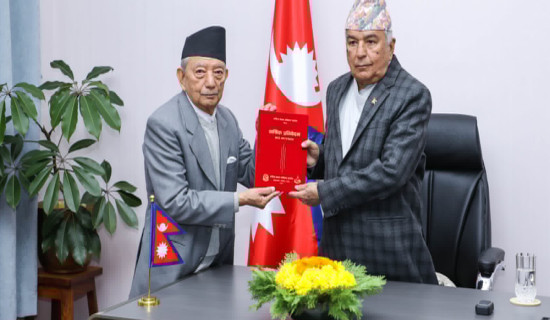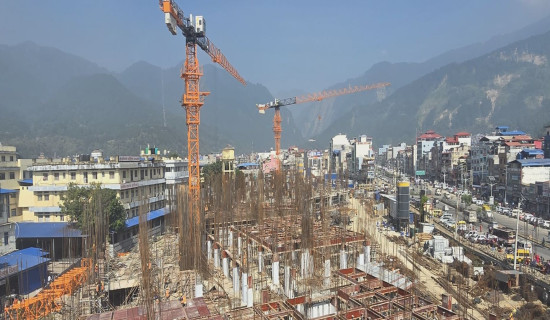- Sunday, 7 December 2025
Time To Build Collective Resilience
For some decades, Nepal has been facing various sorts of incidents triggering stress and trauma. Whether these are natural disasters or protests caused by human foibles and conflicts, Nepalis have bravely coped with the tragedies for a long time. Once again, the time has come for all Nepalis to be united to foster collective resilience in the face of the present upheaval, also called the Gen-Z protest, that took a significant toll on human life and physical properties. The number of fatalities in the 2-day scourge (Sept 8-9) has hit 72 as of the time of writing this article.
Irrespective of the historical events, leaving an indelible impression that Nepalis fought several tragic and victorious wars, the incidents that occurred in recent decades – some as armed conflict, some as people's movements, and some others as disasters – are equally painful and are testing the Nepalis' resilience.
Past protests
The country witnessed a horrible decade-long armed conflict from 1996 to 2006, which took the lives of as many as 17,000 people, spanning security personnel and civilians; destroyed properties worth billions of rupees; displaced thousands of households; and enforced the disappearance of thousands of persons. Still, a large section of Nepali society is living in trauma due to the armed conflict. Many conflict victims are desperately seeking justice. In the background of such conflict, the people's movement-II, also called the second janaandolan, occurred for 19 days in 2066, ultimately toppling the monarchy and ushering in the federal democratic republic. The 19-day second Janaandolan also took the lives of more than 19 persons. In between the armed conflict and the second Janaandolan, Nepal recorded another historically depressing incident – the royal massacre. Similarly, the Madhes movement was a significant protest during which as many as 27 persons were killed. The protest was caused by rage against the interim constitution, which the Madhes-based parties argued failed to address the demands of the Madhesi people. It is worth noting that all the above protests and movements were waged for rights, equality, justice, and a better system of governance.
COVID-19 and disasters
The list of incidents triggering deaths, destruction, and horror does not cease with it. The Gorkha Earthquake occurred in 2015, taking the lives of nearly 9,000 persons, injuring thousands of others, and demolishing humongous infrastructures – private and public. As the world was engulfed by COVID-19, Nepal could not remain safe. The fatalities during the COVID-19 pandemic that lingered for two years stood at over 12,000. The pandemic not only took thousands of lives but also battered the national economy. The achievements Nepal made, especially in poverty reduction, were reversed. The coronavirus pandemic was termed the most lethal global dread of modern times.
Lately, the erratic weather events caused by climate change have further worsened the situation in Nepal. The intensity, scale, and scope of the weather incidents have changed. These incidents trigger unimaginable devastation. Notably, the once-in-a-lifetime climate chaos has occurred for decades, and the decadal ones have turned annual. The recent ones that are unforgettable are the devastating Melamchi floods of 2021 and the Roshi and Koshi floods last September, 2024. The cloudbursts occurred continuously for two days and resulted in massive destruction of infrastructure, killing many people. The supra-glacial lake outburst flood is a fresh disaster that lashed Nepal's districts on the Nepal-China border in Rasuwa. It happened just two months ago.
These are some of the most common and frightening protests and destructive disasters that Nepalis have braved. These are indeed the triggers of stress and disappointment. We are mourning the recent deaths. So, it is time for Nepal to rise from the wreckage and douse the rage with collective resilience. But how can Nepal build the collective residence? It warrants attention at present. Collective resilience is building and reinforcing soft power, or the cohesive feeling and consciousness among all Nepalis. To this end, the approaching festivals can be utilised to care for each other, as unity counts more during a crisis. utilised
Festivals cement cohesion
It is indeed a tremendous asset of Nepal that it enjoys unity in diversity. Diversity is such a wealth upon which a country's soft power flourishes for long. The religious, ethnic, communal, lingual, and social harmony and tolerance Nepal has enjoyed is a matter of pride, to which many others are jealous. Such varied religions and ethnicities have their own festivals observed over different periods in the year. The festivals are not limited to family gatherings and the exchange of greetings but are also an effective medium for fostering reconciliation in society.
The most prominent Nepali festivals – Dashain, Tihar, and Chhath – are approaching soon. At a time when we are observing these festivals with recent protests that took a toll on human life and caused destruction of massive property, it should be our common goal to instill hope, tolerance, and cohesion in family, society, and among communities through the medium of festival celebrations. Religious tolerance is key to our cooperation and collaboration among diverse religious faiths. The respect for each other is reflected even during the cultural events and festivals. The Chhath festival, initially celebrated in the southern plains, Tarai/Madhesh, has climbed up the hills in recent years, gaining the status of a national festival. Many hilly settlements, including the Kathmandu Valley, celebrate the Chhath festival with equal respect these days.
Likewise, gathering people during festivals in respective societies helps unite the people, disregarding class, caste, culture, and religion. The views and experiences shared on bitter animosity, crisis, and trauma caused by the conflict, protests, and disasters provide huge relief and make the atmosphere favourable to cope with the adverse situation. Another critical aspect of togetherness during a festival is the experiences shared by the senior citizens regarding tragic moments and their resilience strategy, whether physical, emotional, or psychological.
Given the human and material loss, it is time to instill the feeling of generosity and collective endeavour, reinforcing the resilience efforts. Resilience is not simply the reconstruction of damaged structures but a driving force to unite people with new hope and tolerance to restore normalcy. The festivals can be celebrated with austerity measures while encouraging generosity and sympathy at this time of urgency.
Ghimire is an executive editor at the National News Agency (RSS)















